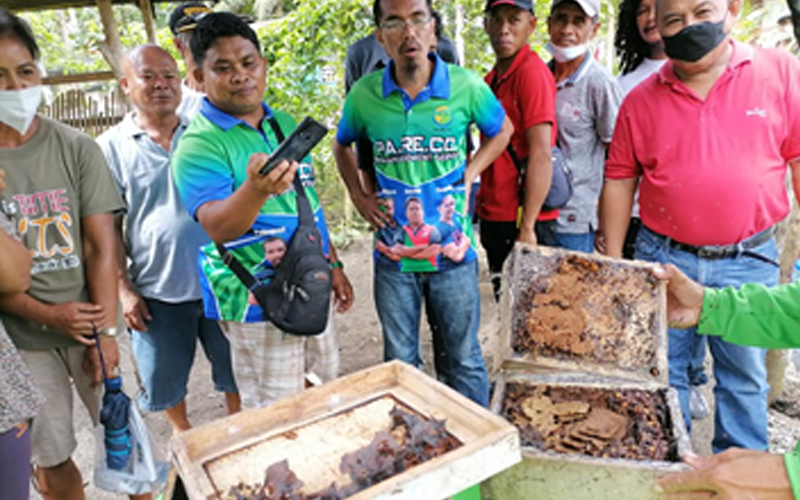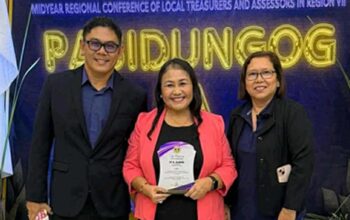
THIRTY future bee keepers from Batuan town completed a day’s worth of orientation in stingless bee keeping and honey production in a bid to make the town the stingless bee capital in Bohol.
No less than Department of Agriculture in Central Viasayas bee keeping expert and researcher Jojo Nemenzo Jr., came all the way from his research station at the Bohol Experimental Station in Ubay to join Jomer Balag, owner of the Jolits Eco Farm, to train locals on the intricacies of bee keeping.
Balag himself an integrated pest management specialist, has been using stingless bee as in-house pollinators in his plants and has professed to have increased his harvest by 40 to 60%.
The activity also highlights the provincial launching of the Stingless Bee keeping and honey production which was in coordination with the DA’s Agricultural Training Institute, Gawad Kalinga, Local Government of Batuan and Barangay Cambacay and Upper Cabacnitan.
“The goal is to steam roll a community of bee keepers, which will not only help people earn income from honey, but increase their harvests as well,” Balag, whose pioneering use of domesticated feral stingless bees as pollinators in his garden, is earning him the title as the authority in stingless bees in Bohol.
Although relatively inferior in honey production compared to honey bees, the option for the endemic stingless bees bodes well for Cambacay and Upper Cabacnitan, which is within the Chocolate Hills and the Rajah Sikatuna Protected Landscape: all under the National Integrated Protected Areas Act, bares Provincial Environment and Natural Resources Officer Ariel Rica, who was also present during the launch.
At that, everyone is barred from bringing in exotic bee species, with their potential to create an imbalance in the ecology.
The option for stingless bees also came when Balag noticed that these kinds of bees, considering their size, can access the pollens of even the tiniest of flowers, and that these bees can go to multispecies of flowers as they range for pollens, thereby assuring the propagation and sustainability of the endemic species in the protected area, hints Nemenzo who presented the pros and cons of the bee species now being kept for honey production.
For Balag however, even if the stingless bees do not produce so much of the honey, these insects do not venture out far and thus could saturate the task of pollination in the nearby farms, increasing the production.
We wish to tie this bee keeping with vegetable production, considering the enhanced pollination which could drastically increase the potential for income in Gawad Kalinga sites, says Rey Balatayo, GK community organizer and volunteerism advocate.
Gawad Kalinga funded for the 30 stingless bee colonies, which training participants would get as starter kits for their own backyard stingless bee keeping projects.
Each colony, according to Nemenzo, can house between 15,000 to 30,000 stingless bees, several of them go out of the boxes they home every night to search for pollens which they store as food.
From these pollens are sugary secretions, which the bees store in honey pots which they stick to filaments inside the bee box colonies.
National Government agencies also came during the launch to pitch in their support to the project.
In the launching were the Department of Agriculture, Agricultural Training Institute, Department of Labor and Employment, Department of Environment and Natural Resources, Philippine Information Agency, Bohol Local Government and local non government organizations affiliated to Bohol Integrated Sustainable Agriculture and Development. (rahc/PIA-7/Bohol)



